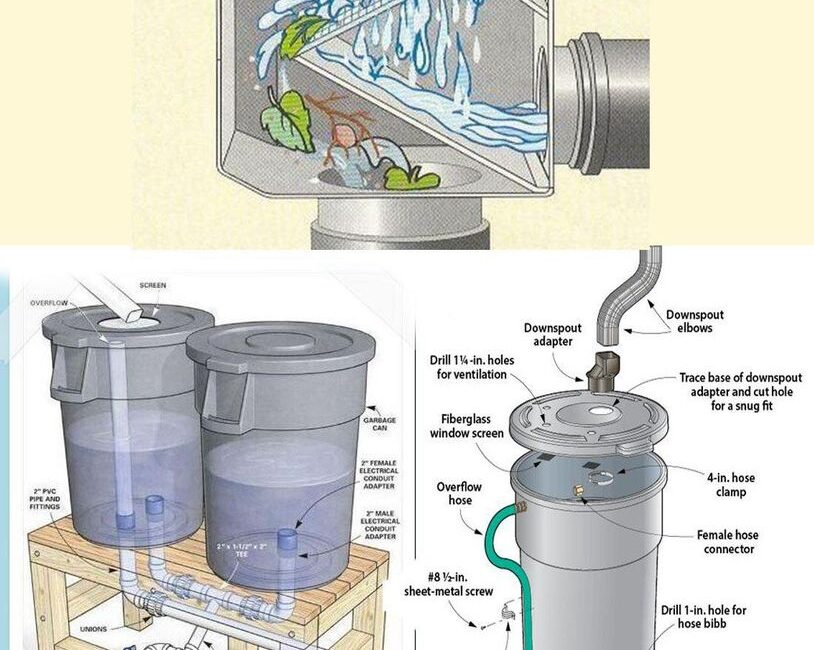Step-by-Step Rain Barrel Building:
- Cleaning the Canvas: Thoroughly clean your barrel to remove any residue or contaminants. A mild soap solution and rinsing with clean water are sufficient.
- Spigot Spectacular: Mark the location for the spigot on the lower side of the barrel, ensuring it’s easily accessible. Drill a hole according to the spigot’s size. Wrap the spigot threads with Teflon tape for a watertight seal, then screw it into the pre-drilled hole from the outside. Secure the spigot with washers and a nut on the inside of the barrel. Apply silicone sealant around the fitting for added security.
- Overflow Option (Optional): If using an overflow valve, repeat the drilling and installation process similar to the spigot, placing it a few inches higher on the barrel. Attach a hose to the overflow valve to divert excess water away from your house.
- Lid Life: On the lid, use a utility knife to carefully cut a circular opening large enough to accommodate your mesh screen. Sand any rough edges for a smoother finish.
- Screening Success: Secure the mesh screen over the lid opening using zip ties or a sturdy rubber band. Ensure the mesh is taut to prevent even small debris from entering.
- Sealing the Deal: Apply a bead of silicone sealant around the rim of the lid where it meets the barrel. Press the lid firmly onto the barrel and weigh it down with objects like bricks for several hours to ensure a proper seal.
- Duct Tape Defense (Optional): For additional reinforcement, especially if using a repurposed barrel, apply duct tape around the rim of the lid where it meets the barrel.
Congratulations! Your rain barrel is complete. Now comes the fun part:
- Connecting the Drainpipe: Attach a downspout diverter (diversion elbow) to your existing gutter downspout. This will channel rainwater into your new rain barrel. You may need additional hoses or connectors depending on your setup.
- Positioning Your Rain Barrel: Place your rain barrel on a stable platform near your downspout, ensuring the spigot is easily accessible for watering. Elevate the barrel slightly (using bricks or cinder blocks) if necessary, to improve water pressure when using the spigot.
With your DIY rain barrel in place, you’re ready to collect rainwater and reduce your reliance on tap water! Remember to disconnect the barrel during freezing temperatures to prevent damage.
Building a rain barrel is a fantastic way to contribute to a sustainable lifestyle. So, grab your tools, unleash your inner DIYer, and embark on this rewarding project that benefits your garden and the environment!
Pages: 1 2




